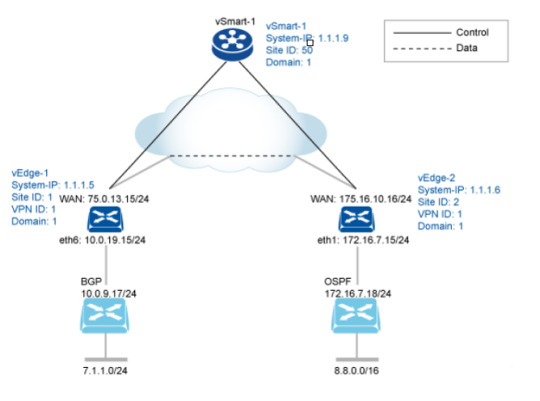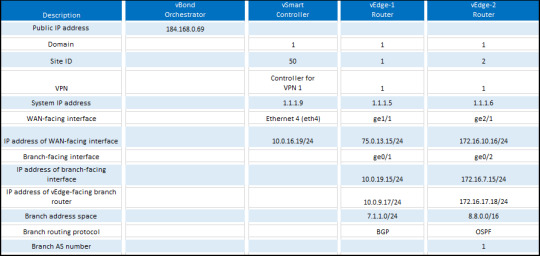#RoutingProtocol
Explore tagged Tumblr posts
Text
#MobileIP#MobileArchitecture#NetworkComponents#MobileNode#HomeAgent#ForeignAgent#CareOfAddress#IPMobility#MobilityManagement#SeamlessConnectivity#RoutingProtocol#NetworkDesign#MobilityProtocols#DataPacket#PacketForwarding#AgentAdvertisement#RegistrationRequest#LocationUpdate#UserMobility#DynamicIP#HandoffMechanism#NetworkEntities#AddressResolution#LinkLayer#TransportLayer#RoutingTable#NetworkEfficiency#SessionPersistence#MobileApplications#UserExperience
0 notes
Text
Imagine you’re planning a road trip from your home to a friend’s house in another city. You’ve never been there before, so you need directions. You could use a map or a GPS to find the best route. Now, think of your home as the starting point and your friend’s house as the destination. The roads connecting your home to your friend’s house represent different paths you can take.

0 notes
Text
Static and Default Routing Configuration on GNS3 | Step-by-Step Guide - 2025
youtube
#ping#internetworkingdevices#Switch#ICMP#datalinklayer#framing#mac#macaddress#hub#bridge#collision#Applicationlayer#networklayer#icmp#ccna#ccnacourse#ccnaclasses#ccnatraining#ccna200301#ccnaonline#routing#switches#switching#router#routingprotocols#vlan#trunking#dtp#stp#Spanningtree
0 notes
Text


Explore practical routing configuration examples, offering essential skills for optimized data flow and network reliability. https://www.dclessons.com/routing-configuration-example
#RoutingConfiguration#NetworkRouting#DataCenterNetworking#CiscoNetworking#RoutingProtocols#NetworkDesign
0 notes
Text
Title: Show me the ip route!
Undertitle: Understanding Administrative Distances in Network Routing.
Written by: JoelDanielValdez(USA-NM)
JoelDValdezC021315 #JDVc021315
Introduction: In computer networking, routing protocols are used to determine the best path for data packets to travel from the source to the destination. The Administrative Distance (AD) is a key concept in routing, as it helps to determine the best path to take for data packets. This paper will explore the concept of Administrative Distances in network routing, including what they are, how they are used, and their importance in network security.
What is Administrative Distance? Administrative Distance is a metric used in network routing protocols to determine the best path for data packets to travel. It is a numerical value that represents the trustworthiness of a particular routing protocol or route. In the routing table, the Administrative Distance is displayed as a number in brackets after the IP address of the next hop.
For example, in the routing table entry "S 10.2.0.0 [1/0] via 172.16.2.2", the Administrative Distance is "1". This means that the route to the 10.2.0.0 network is learned from a directly connected interface, such as a static route. In contrast, a route learned from a dynamic routing protocol, such as OSPF or BGP, may have a higher Administrative Distance.
How is Administrative Distance Used? Administrative Distance is used to determine the best path for data packets to travel. When a router learns multiple paths to the same destination network, it selects the route with the lowest Administrative Distance. This ensures that the router is using the most reliable and trustworthy route to reach the destination network.
Administrative Distance is also important in network redundancy. When multiple routers are used to reach the same destination network, the router with the lowest Administrative Distance is used as the primary router. If the primary router fails, the router with the next lowest Administrative Distance is used as the backup router.
Importance in Network Security Administrative Distance is an important concept in network security. By using Administrative Distances, network administrators can ensure that data packets are being routed through the most secure and trustworthy paths. Additionally, by configuring the Administrative Distances appropriately, administrators can prevent unauthorized access to the network.
Conclusion: In conclusion, Administrative Distance is a key concept in network routing protocols. It is used to determine the best path for data packets to travel, and is an important factor in network redundancy and security. By understanding Administrative Distances, network administrators can ensure that their networks are reliable and secure.
References:
Cisco Systems. (2005). Cisco IOS IP Routing: Protocol-Independent Command Reference. Cisco Press.
Odom, W. (2013). CCENT/CCNA ICND1 100-101 Official Cert Guide. Cisco Press.
Parkhurst, B. (2016). CompTIA Network+ N10-006 Exam Cram. Pearson IT Certification.
Beasley, J. (2018). Network Security Bible. Wiley.
Stallings, W. (2017). Network Security Essentials: Applications and Standards. Pearson.
#administrativedistance#showiproute#routrrs#switches#networking#programming#ccna#cisco#studynotes#notes#documentation#it#static#lowestmetric#metric#routingprotocol#jdvc021315#jdvaldezc021315#joeldvaldezc021315
0 notes
Text
پردازنده Intel Atom
1-پردازنده Intel Atom:
پردازنده Intel Atom پردازنده کممصرفی است و معمولا در نوتبوک، تبلت، اسمارتفون، اینترنت اشیا و دستگاههای مبتنی بر شبکه استفاده میشوند چون در این موارد، مصرف برق و عمر باتری از قدرت پردازش مهمتر است. نام این مدل پردازندهها عددی ندارند. عدد و حروف موجود در نامگذاری CPU اتم، بیانگر ویژگی های خاص پردازنده است. اگر در نامگذاری پردازنده از N استفاده شود یعنی برای نوتبوک مناسب است و با حرف Z یعنی برای دستگاهها اینترنتی و سیار.
http://ysorkh.net/
http://ysorkh.net/home-ml10op/
http://ysorkh.net/home/hpe-memory/
http://ysorkh.net/home/articles/portsecurity/
http://ysorkh.net/home/voip-%d8%ae%d8%af%d9%85%d8%a7%d8%aa/
http://ysorkh.net/home/contact/
http://ysorkh.net/home/articles/routingprotocol/
http://ysorkh.net/home/articles/tunneling/
0 notes
Video
youtube
#RoutingProtocol VS #RoutedProtocol (Routing comparison with Routed Prot...
0 notes
Text
CCNA Day 36. Introduction to OSPF Protocol: Understanding Open Shortest Path First
youtube
#ping#internetworkingdevices#Switch#ICMP#datalinklayer#framing#mac#macaddress#hub#bridge#collision#Applicationlayer#networklayer#icmp#ccna#ccnacourse#ccnaclasses#ccnatraining#ccna200301#ccnaonline#routing#switches#switching#router#routingprotocols#vlan#trunking#dtp#stp#Spanningtree
0 notes
Text
CCNA Day 35 EIGRP Route Manipulation | EIGRP Path Manipulation
youtube
#ping#internetworkingdevices#Switch#ICMP#datalinklayer#framing#mac#macaddress#hub#bridge#collision#Applicationlayer#networklayer#icmp#ccna#ccnacourse#ccnaclasses#ccnatraining#ccna200301#ccnaonline#routing#switches#switching#router#routingprotocols#vlan#trunking#dtp#stp#Spanningtree
0 notes
Text
CCNA Day 34 EIGRP Route Metric Calculation | Delay and Bandwidth
youtube
#ping#internetworkingdevices#Switch#ICMP#datalinklayer#framing#mac#macaddress#hub#bridge#collision#Applicationlayer#networklayer#icmp#ccna#ccnacourse#ccnaclasses#ccnatraining#ccna200301#ccnaonline#routing#switches#switching#router#routingprotocols#vlan#trunking#dtp#stp#Spanningtree
0 notes
Text
CCNA Day 33 EIGRP Packet Capture using Wireshark | EIGRP messages
youtube
#ping#internetworkingdevices#Switch#ICMP#datalinklayer#framing#mac#macaddress#hub#bridge#collision#Applicationlayer#networklayer#icmp#ccna#ccnacourse#ccnaclasses#ccnatraining#ccna200301#ccnaonline#routing#switches#switching#router#routingprotocols#vlan#trunking#dtp#stp#Spanningtree
0 notes
Text
CCNA Day 32 EIGRP Protocol | EIGRP Configuration | EIGRP Packets
youtube
#ping#internetworkingdevices#Switch#ICMP#datalinklayer#framing#mac#macaddress#hub#bridge#collision#Applicationlayer#networklayer#icmp#ccna#ccnacourse#ccnaclasses#ccnatraining#ccna200301#ccnaonline#routing#switches#switching#router#routingprotocols#vlan#trunking#dtp#stp#Spanningtree
0 notes
Text
CCNA Day 31 RIP Best Path Selection Mechanism | Routing Information Protocol Best Path
youtube
#ping#internetworkingdevices#Switch#ICMP#datalinklayer#framing#mac#macaddress#hub#bridge#collision#Applicationlayer#networklayer#icmp#ccna#ccnacourse#ccnaclasses#ccnatraining#ccna200301#ccnaonline#routing#switches#switching#router#routingprotocols#vlan#trunking#dtp#stp#Spanningtree
0 notes
Text
CCNA Course - Day 30 RIP Version 2| Routing Information Protocol version 2 in English
youtube
#ping#internetworkingdevices#Switch#ICMP#datalinklayer#framing#mac#macaddress#hub#bridge#collision#Applicationlayer#networklayer#icmp#ccna#ccnacourse#ccnaclasses#ccnatraining#ccna200301#ccnaonline#routing#switches#switching#router#routingprotocols#vlan#trunking#dtp#stp#Spanningtree
0 notes
Text
CCNA Course - Day 29 RIP Protocol | Routing Information Protocol in English
youtube
#ping#internetworkingdevices#Switch#ICMP#datalinklayer#framing#mac#macaddress#hub#bridge#collision#Applicationlayer#networklayer#icmp#ccna#ccnacourse#ccnaclasses#ccnatraining#ccna200301#ccnaonline#routing#switches#switching#router#routingprotocols#vlan#trunking#dtp#stp#Spanningtree
0 notes
Text
CCNA Course - Day 28 Default Routing | Static Routing and Default Routing Configuration in English
youtube
#ping#internetworkingdevices#Switch#ICMP#datalinklayer#framing#mac#macaddress#hub#bridge#collision#Applicationlayer#networklayer#icmp#ccna#ccnacourse#ccnaclasses#ccnatraining#ccna200301#ccnaonline#routing#switches#switching#router#routingprotocols#vlan#trunking#dtp#stp#Spanningtree
0 notes